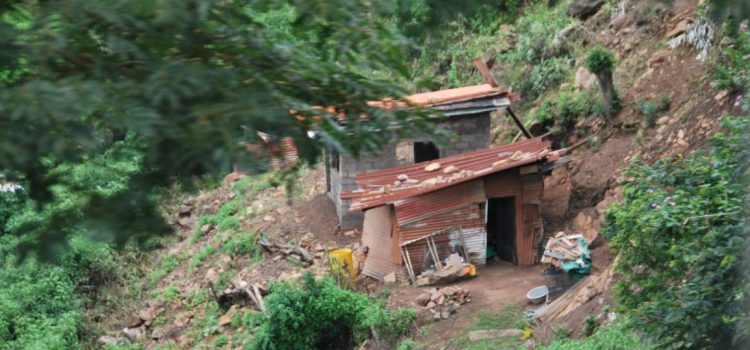

This article is an excerpt from the Shortform book guide to "The Bottom Billion" by Paul Collier. Shortform has the world's best summaries and analyses of books you should be reading.
Like this article? Sign up for a free trial here .
What are the four different types of poverty traps? Is it possible for countries to escape those traps?
According to British economist Paul Collier, the four types of poverty traps are the conflict trap, the natural resource trap, being landlocked, and poor governance. These “traps” are why the poorest countries remain poor and struggle to catch up with the developing world.
Here’s a detailed look at each kind of poverty trap.
Kinds of Poverty Traps
In his book The Bottom Billion, Paul Collier identifies four distinct types of poverty “traps” that afflict the bottom billion, locking them into poverty with little chance of escaping on their own: the conflict trap, the natural resource trap, being landlocked, and poor governance.
(Shortform note: Collier borrows the term “poverty trap” from fellow development economist Jeffrey Sachs, who initially used the term while referring to the “trap” of endemic diseases like malaria.)
Collier says all nations of the bottom billion suffer from at least one of these traps, while many deal with a combination of the four. Seventy percent of those suffering from these traps are in Africa, which is why Collier urges the West to place its focus there.
Collier thinks it’s a mistake to focus on emerging, middle-income economies like China and India. Unlike countries in the bottom billion, both of these nations have achieved sustained growth and aren’t stuck in an economic rut. When aid agencies like the World Bank and International Monetary Fund (IMF) take a more expansive view of the global poor, Collier says this only diverts resources from the poorest nations that need it most.
Poverty Trap #1: The Conflict Trap
The first of Collier’s poverty traps is conflict. Specifically, Collier focuses on civil wars and coups d’etat, which affect (or have recently affected) about 70% of the bottom billion, causing dramatic harm. Aside from the human costs, this violence reduces economic growth, scares off potential investors, and causes people (and their money) to flee. To Collier, reducing the prevalence of conflict is essential to elevating the bottom billion out of poverty.
Causes of Conflict
Collier and his researchers designed a model to uncover the causes of conflict in developing nations. Among others, they measured variables like income, growth rates, income inequality, and ethnic composition to determine which factors increased the likelihood of conflict. In their analysis, they distinguished between civil wars and coups d’etat: For conflicts that lead to civil war, they discovered three main culprits: low income, slow growth, and natural resource dependence; for coups, Collier found that low income and stagnant growth are also the main predictors of government overthrow.
1. Low income: For a given nation, if current income is doubled, the risk of civil war is cut in half.
2. Slow growth, or economic decline: Each percentage point of GDP reduction increases civil war risk by a percentage point.
3. Natural resource dependence: The more a nation depends on revenue from natural resources, the greater the threat of civil war. Collier suggests that this is because rebels are more likely to take the risk of war to get their hands on the glut of natural resource money.
Collier’s findings contradict what many policymakers assume leads to civil war: income inequality, political repression, and a colonial legacy. Collier found these factors didn’t affect the likelihood of civil war one way or the other.
Ethnic diversity is another often-mentioned potential cause of conflict. But Collier found an increased risk of conflict only in societies with one ethnic group large enough to form a majority. This majority could oppress smaller groups through majority rule, leading to tension and eventual war.
Poverty Trap #2: The Natural Resource Trap
While the conflict trap might be expected, there is a more counterintuitive trap for the bottom billion: the natural resource trap. This trap afflicts nations whose primary revenue comes from selling natural resources like oil, diamonds, or precious metals. According to Collier, reliance on lucrative natural resources harms poor nations in three ways: “Dutch disease,” volatile prices, and the corruption of democracy.
Dutch Disease
Natural resource exports often harm economic growth considerably, due to a phenomenon economists call “Dutch disease.” When a nation discovers a large amount of a natural resource like oil or natural gas (as the Netherlands did in the 1950s, hence the name) and exporting it dominates their economy, this sets off a series of economic consequences that usually leads to more harm than good. Here’s the typical process, using oil as an example.
- A nation discovers, and starts exporting, large amounts of oil.
- Foreign nations buy the oil, causing an inflow of foreign currency.
- The country’s own currency rises in value relative to foreign currencies, because it’s now relatively scarce and foreign currency is abundant.
- Exports produced within the nation (like textiles, for example) become unprofitable. This is because their production costs are paid in domestic currency, and are now more expensive, while their revenue is in foreign currency, which is now relatively cheap.
Collier argues that the best way for poor nations to grow rapidly is to improve productivity in labor-intensive exports. For example, China exports textiles and electronics, India provides customer service to the West, and both have attained sustained economic growth as a result. Natural resource exports, on the other hand, undercut this method of development the most.
Volatile Prices and Bad Budgeting
In addition to creating “Dutch disease,” natural resource wealth harms economies when prices are volatile and governments make bad budgetary decisions. Collier explains that when oil prices are high, government revenue is high. This usually leads to big increases in government spending.
However, when prices drop precipitously (as often happens with oil), governments are loath to make corresponding budget cuts. Collier says that when they do, they usually cut the wrong things. For example, it’s much easier to cut the budget for schools than to downsize the newly built presidential palace.
Corrupting Democracy
In addition to Dutch disease and bad budgeting, Collier also believes that an influx of revenue from natural resources corrupts the democratic process in the poorest democracies, leading to economic harm. Collier thinks this happens for two reasons:
- Shortsightedness: In poor democracies, leaders are focused on the short-term goal of winning the next election, which leads to irresponsible spending. On the other hand, autocracies with a firm grip on power are free to make longer-term investments with payoffs down the road.
- Patronage politics: Leaders find the most cost-effective way to win elections. Poor nations flush with resource revenue are prone to money-driven political corruption, such as bribery, buying votes, and intimidation, because they don’t have the checks and balances of developed democracies.
Poverty Trap #3: Being Landlocked
Collier’s third trap for poor nations is being landlocked. In Collier’s view, geography makes a big difference in economic performance. Nations that are surrounded on all sides by other nations and lack access to waterways are at a significant economic disadvantage because trade routes are largely out of their control.
Higher Transport Costs
Collier cites research by economist Jeffrey Sachs, who found that being landlocked reduces a nation’s GDP by about half a percentage point. Because so much trade occurs through seaports and other waterways, countries lacking direct access to these routes pay more to get their goods to global markets.
Impact of Neighboring Countries
Landlocked countries are also dependent on the economic policies of their neighbors, which Collier says can be a positive or a negative. Research suggests that if a landlocked country’s neighbors grow by an additional 1%, it grows by an additional 0.7%, due to spillover effects. For example, landlocked Switzerland has benefited from the growth of neighboring countries France and Germany, because higher incomes in these countries are often spent on Swiss imports.
In Africa, however, most countries are landlocked and suffer the negative spillover effects of their low-growth neighbors.
Strategies for the Landlocked
Collier has identified nine strategies that can help mitigate the disadvantage of being landlocked. We’ve grouped them into two categories: Be kind to your neighbors, and be inviting to outsiders.
Be Kind to Your Neighbors
Landlocked countries can help their neighbors grow by working together on transport infrastructure, which affects all parties in the region. Reducing regional trade barriers can also facilitate growth.
Be Inviting to Outsiders
For the bottom billion, cultivating an environment for Western partnerships is crucial. Collier names four ways to attract help from global partners:
- Set superior policy. For example, Lebanon became a financial hub for the Middle East because of its pro-business posture.
- Take advantage of exports via airplane freight and e-commerce opportunities by setting a proper regulatory policy. This can help compensate for the lack of access to bridges and seaports.
- Be a good investment. Violence, corruption, and instability scare off would-be benefactors like the World Bank and IMF. Curbing these forces can entice loans and financial aid.
- Encourage remittances (expatriates sending money back to their native country) by making cross-border banking easier.
Poverty Trap #4: Poor Governance and Failed States
As the final trap, Collier identifies poor governance as a problem that reinforces poverty and low growth. Incompetent government hinders economic growth or even leads to ruin.
Corruption
Due to corruption, many of the poorest countries in the world have leaders who are among the richest people in the world. For example, the daughter of Angola’s president is a billionaire despite the fact that half of Angolans earn less than $2 a day.
Why Change Is So Hard
Collier notes that many good people try their best to achieve reform, but are often overpowered by vested interests. For example, in the bottom billion nations, dictators often replace honest civil servants with people who are willing to do their personal bidding. Collier argues that this is why the bottom billion need outside assistance.
75% of the bottom billion live in nations that have at some point been categorized as a failing state.
The power of vested interests and the status quo substantially reduce the probability of failed states correcting course. According to Collier’s statistical analysis, the likelihood of a failed state having a sustained turnaround in a given year is only 1.6%. The average failing state stays in this category for 59 years.

———End of Preview———
Like what you just read? Read the rest of the world's best book summary and analysis of Paul Collier's "The Bottom Billion" at Shortform .
Here's what you'll find in our full The Bottom Billion summary :
- How development aid programs pay too little attention to struggling countries
- A look at the four poverty traps, and the four remedies for them
- How conditions for the bottom billion are changing






